- Home
- Trevor Hoyle
Last Gasp Page 19
Last Gasp Read online
Page 19
His head still throbbed. He couldn’t shake it.
He took a plastic vial from a side drawer, shook a red-and-white capsule into his hand, and washed it down with water. Phenoperidine was a narcotic analgesic with side effects similar to those of morphine, and the doctor had warned him not to take more than three in any twelve-hour period. It was an effective pain-killer, although it tended to make him light-headed and euphoric. Hardly the right frame of mind for dealing with sober matters of state, Lebasse thought wryly.
The light from the window was hurting his eyes. He got up—too quickly, it seemed, because all of a sudden he felt giddy—and had to steady himself against the corner of the desk before going across to close the Venetian blind.
He held the cord in his hand. It had the feel and texture of thick rope. He tugged at it and the large office was plunged into restful twilight.
Turning away, Lebasse was mesmerized by the pattern the filtered sunlight made on the pastel green carpet... thin gold rods arranged in perfect symmetry.
Hell, that was so pretty!
A lump of emotion rose up in his throat. That’s what he’d miss the most. Vibrant golden light. It was light from heaven—God’s light. He’d never been a religious man, but he supposed that the prospect of death heightened one’s awareness of the Infinite. He’d soon know. Nothing surer.
It was restful in this aquarium. Everything was cool limpid green, peaceful and green and golden (the gold bars like golden steps reaching all the way to the Infinite) and for the first time in his life he had absolutely no fear of death. “Death, where is thy sting?” Death was pure golden light all the way to infinity, beckoning him. He welcomed it, in fact. To be at one with the Infinite, shimmering in green and gold light ...
What more could any man want?
Woman.
Damn right, a woman!
Miracle of miracles, there she was, golden-haired, arms outstretched, drifting toward him. She was holding something, an offering, and he, in turn, opened his arms to her. But now she was turning away. Oh, no. He needed this woman to share eternity with him. Sure he did. Damn sure. Nothing surer.
Then. Something beautiful took place. The woman began to sing. Her mouth opened wide and a high note pierced his brain with such exquisite intensity that he wanted to weep. Siren song. He was uplifted, his spirits soaring, floating, flying toward the Infinite.
Why had he never flown before? It was so ridiculously easy!
Everyone ought to try this, he told himself, flying toward the bars of light, which parted before him in glittering splendor as he crashed through the window headfirst taking the tangled Venetian blind with him and soared ecstatically all the way down to the multicolored concrete paving four floors below.
When his blond secretary came back with his senior aide they found an empty office filled with a humid breeze. One complete window had disappeared from its aluminum frame and sunlight streamed like a golden searchlight onto the pastel green carpet. The senior aide approached the window. The blond secretary hung back, white except for her garish lips.
Thomas Lebasse, ex-secretary of defense, lay mangled and twisted on the concrete paving. The images invoked by having chosen the one capsule containing a large dose of LSD-25 were wiped clean from his brain.
Nothing surer.
The research laboratories of Advanced Strategic Projects were situated some thirty miles southeast of Washington, D.C., along highway 301, down an unmarked road leading nowhere.
A few fishermen did use the road to get to Patuxent Creek, which meandered northward until it lost itself in young plantations of spruce and firs, though none could have been aware of the square gray single-story building with smoke-blue windows that blended in with the picturesque Maryland landscape.
Unobtrusive as it was to the casual eye, the installation kept its real secret even more closely guarded. Belowground it extended to five sublevels containing offices, recreation and living quarters, laboratories and test chambers, the latter being the size of football fields.
The 230 acres of grounds were patrolled by guards dressed as hunters in check shirts and Windbreakers. They patrolled with Alsatian dogs, double-barreled shotguns, and shortwave transceivers attached to throat mikes. Infrared scanners planted in the trunks of trees detected every form of life down to the size of a dormouse. A web of lasers crisscrossed the approach to the building, trapping the unwary in a deadly electronic maze.
Inside the building, security was equally as strict. Two elevators, monitored by closed-circuit TV, were the only means of access below. Every visitor had to present an electrosensitized identification disk whose microchip circuitry held a record of the holder’s unique physiological profile: fingerprints, voiceprint, biorhythms, and ECG trace. Should anyone attempt the subterfuge of presenting another’s disk, the system would automatically seal the elevator doors, locking the intruder inside a titanium-steel vault.
So far no one had tried.
The deepest and most extensive sublevels housed the laboratories and test chambers, equivalent in size and facilities to a medium-size university. Here in the main test chamber a series of rubber-lined stainless-steel tanks contained a profusion of marine animal and plant life. Temperature and salinity varied from tank to tank, ranging from subzero to equatorial with all the graduations in between. Ultraviolet panels mimicked the action of sunlight and sprinklers supplied calibrated amounts of rainfall. Oceanic and climatic conditions were replicated as faithfully as science knew how and technology could achieve.
From the observation booth behind the yellow gantry rail, Dr. Jeremiah Rolsom, scientific director of ASP, watched three masked and rubber-suited operatives manhandling a drum along the gantry to the feeder chute of tank 9. The drum was painted bright pink with a large black N on its side.
“Is this the last of the batch?” Rolsom asked a technician seated at the instrument console.
“Yes, sir.”
“What concentration?”
“Thirty-four percent.”
Rolsom nodded and nibbled his lower lip, his round black face bearing the reflection of the arc lights high up in the vaulted ceiling of the chamber. He said over his white-coated shoulder, “We’re trying inorganic nitrogen in varying concentrations. It’s pretty much the same as the fertilizer used by farmers, except the proportion is what a lake might receive in runoff over five years.” He turned to face Major Madden, who was standing with his arms behind his back, pointed chin slightly raised. “Essentially it’s the same process, only speeded up by a factor of several thousand.”
“How soon before you get results?”
“Three to four weeks. We’re trying to duplicate the Lake Erie experience.” Rolsom used his large strong hands to illustrate his explanation. “Rainwater draining from the farmlands of the Middle West”—the hands swept down, the pink pads of his fingers outspread—“took with it the nitrogen from the soil equivalent to the sewage of about twenty million people, which was double the population of the Lake Erie hinterland at that time. What happened? The nitrogen balance of the lake was disturbed. You got these huge algae blooms, which grew unchecked. As the blooms decayed the bacterial action consumed most of the lake’s free oxygen, killing off fish and plants. Result? The classic case of eutrophication—and one dead lake.”
Madden looked past him into the chamber. “It might work with a lake, but will it work with an ocean?”
“Sure, given time, plus vast amounts of nitrogen-rich fertilizer.” Rolsom stuffed tobacco into an old briar pipe and pointed the stem at the rows of tanks through the window. “But don’t forget—that’s only one option open to us. Out there you’ve got just about every conceivable combination of herbicidal overkill. It all depends what you want to happen and how quickly.”
The sharp angles of Madden’s face were softened by the booth’s dim lighting. He looked like a boy, except for his eyes, black and hard and shiny. “Are we talking about months or years?” he asked.
The director pu
ffed his pipe into life before answering. “Everything depends on deployment and whether you’re going for land or sea targets. Now take Bloomingdale’s—the chloraphenoxy acid group. That acts as a plant hormone, causing metabolic changes so that the plant grows at a phenomenal and uncontrolled rate. It grows itself to death.”
“More suited to land vegetation.”
“That’s right,” Rolsom affirmed. “Our other main group, symmetrical triazines—Macy’s—interferes with photosynthesis. The plant’s biochemical processes are halted and eventually it dies of starvation. Macy’s would be more effective in the oceans, killing off the phytoplankton. But speed of deployment is the key.”
“Well, we’ve got missiles and supertankers,” Madden said. “We’ve tested Bloomingdale’s at the range in Colorado and it’s looking good. A single payload targeted on South America could wipe out fifty square miles of rain forest. As for the oceans, supertankers at strategic locations could dump Macy’s within hours. As far as anyone knew they’d be commercial vessels on regular trade routes. Not a nuke to be seen.”
Rolsom led the way into the corridor, trailing aromatic blue smoke.
“You’ll want to see the bacteriological section while you’re here.”
“How’s it coming along?”
“We’re experimenting with a number of mutant strains of bacteria that consume oxygen at a far greater rate than normal.” Rolsom was using his hands for more graphic displays. “The bacteria don’t actually interfere with photosynthesis but rather eat up the oxygen as fast as the phytoplankton can produce it. In two, maybe three months with that rate of growth you could turn the whole of the Pacific into bacterial soup.”
The image was arresting and Lloyd Madden felt a pleasurable shudder down the length of his spine. As a kid he’d gone around with an imaginary machine gun wiping out everything that moved, rat-ta-ta-ta-ta-ta-ta-ta-tat! Seeing gaping bloody holes everywhere. Headless corpses. Guts spilling out. It had been a harmless pastime for a lonely boy. He still vividly remembered seeing a Vietnamese rebel being shot in the head on a newscast and had experienced his first proper erection. Emaciated yellow corpses strewn about a paddy field excited the same reaction.
This was nearly as good. They took the elevator up to sublevel D and entered the laboratory, lit by glareless ceiling panels. He felt an almost sensual pleasure. This was his achievement! All these people working away to realize his ambition! While it was true that General Wolfe was ostensibly head of ASP and it had been Blindeye’s rank and prestige that had persuaded the Pentagon to fund the establishment, the real motive force had come from him, from the kid with the imaginary machine gun.
That assignment in the Antarctic and the interrogation of the Russian scientist had started it all. Here was the warfare of the future. Here was a way of terrorizing not just a country or a continent but an entire planet. As the idea grew and took shape and assumed an independent existence, so his covert power had gone from strength to strength. Now, looking around at what he had created, Lloyd Madden felt an ecstatic thrill and the deepest satisfaction.
He strolled with the director past rows of white-coated researchers crouching over lab benches. At the far end of the long room an illuminated red sign warned STERILE AREA, and beyond, through a double pane of glass, masked and rubber-suited figures moved like priests among glass tanks on metal racks. Everywhere there was a cathedral calm and quiet.
Beneath the red sign Rolsom stopped and pointed through the panel into the sterile inner chamber. The glass tanks were half-filled with seawater in which a greenish-brown scum floated.
“You can see how the bacteria progressively affect the phytoplankton. Each tank represents a time lapse of one week, and by the sixth or seventh week the bacteria outnumber the marine organisms, which then start to decay. The phytoplankton is being choked to death.”
“The change in color is an indication of how the bacteria are consuming the oxygen,” Madden said, wanting to be quite sure he understood.
“That’s right. The green is the healthy phytoplankton and the color darkens and turns brown as the bacteria multiply.” Rolsom tapped the glass with his pipe stem. “The real beauty of this method is that we need only a small amount of chemical bacteria to start the process rolling—after that it’s self-generating. Not only is it highly effective, but also very economical.”
“And very fast,” Madden mused. There was a little catch of breath in his throat. “In three months we could virtually eliminate all phytoplankton growth.”
“Don’t be too optimistic,” Rolsom said, sounding a note of warning. “It’s early days yet, a year before we’re ready for field trials. And we still don’t know what happens over the long term, after the bacteria have taken over. It could be that it will continue multiplying—”
But Madden didn’t want to hear. He said brusquely, “That’s irrelevant as far as we’re concerned. Have you tested it at Starbuck yet?” He was gazing fixedly through the glass panel at the rows of tanks.
Starbuck was an island practically on the equator, in the dead center of the Pacific Ocean. Once used for naval weapons testing, it had been taken over by ASP for marine trials on herbicides. Its location tickled Madden, being near Canton Island where Theo Detrick had spent twenty-odd years researching his precious diatoms. Madden could hardly resist a chuckle. The proximity of Starbuck to Canton only embellished the poetic irony, he felt.
“No, I told you, it’s too soon,” Rolsom said a shade uneasily. That was the trouble with the military, and with Major Madden in particular: too impetuous. Just get the results and forget the groundwork. There were other aspects that bothered him more. He glanced around at the researchers nearby and dropped his voice to a murmur. “What about the other problem?”
“What other problem?” Madden said, not looking at him.
“The political one.”
“I thought you knew better than to ask.”
“It does concern me, Major.”
“No, it doesn’t. This is what concerns you, right here”—nodding stiffly at the tanks with their greenish-brown scum.
“All right then. But if the secretary of defense is going to veto the project I think I have a right—”
“He isn’t going to veto the project, so you can stop worrying,” Madden said, turning away. “It’s been taken care of. Let’s leave it at that.”
“We still need presidential approval,” Rolsom persisted, following him to the door.
Madden paused, his thin nostrils pinched and white. His face had the consistency of wax under the ceiling panels. “Yes, Rolsom. I am fully aware of that fact,” he said with a finality that debarred further discussion.
They took the elevator up to the director’s office on sublevel B, not exchanging another word. Any kind of personal relationship was out of the question with Major Madden, the scientist realized. Not a spark of human warmth ever ignited those cold dead eyes. He found it impossible to imagine Madden having a home or family life. In fact he was one of those people you couldn’t visualize as ever having to use the lavatory: cast-iron bowels, with no need to shit.
Madden collected his cap and gloves. “I’m going out to the West Coast to look over the plant. Any problems with supplies?”
Rolsom shook his head. “JEG gives us good service. No complaints.”
“Glad to hear it,” Madden said and departed without bothering to shake hands.
On his way to the phone booth in the rear of the bar on G Street, Gene Lucas asked for a diabetic beer. Why in tarnation couldn’t he just use the phone like other people without feeling obliged to buy something? Every time that same stupid pang of guilt.
The folding door was stiff and he had difficulty in closing it. A moment later he regretted he had. The booth stank of beer and cigarette smoke and vomit, making him catch his breath sharply. While he fumbled for change he saw the barman set up the beer and a glass and turn back to the TV set propped in its corner niche. Four customers, all male, slouched over their dri
nks. The barmen said something Lucas couldn’t hear, but he heard the men’s laughter, loud and raucous, through the glass.
Lucas gripped the coins in his sweaty hand while he unfolded the slip of paper. He’d no idea whether this was Lebasse’s home number or his office. When he’d called before the unidentified voice had said only that Mr. Lebasse wasn’t available and would he call back later? A secret service operative or just a clerk in the Defense Department? It was a shadowy, shifting world that Lucas had encountered only in books and movies.
Indeed, before reading the dossier, he’d thought these precautions rather infantile. Surely to God’s sake it wasn’t necessary to go through the tiresome rigmarole of calling secret numbers from public pay phones, like a spy in some cheap melodrama?
But the dossier had changed his mind quickly enough. It was the most horrifying document he’d ever read. No wonder Lebasse had gone about it in such a clandestine manner. That there were people who calmly and deliberately could contemplate putting the entire world at risk for some spurious tactical “advantage.” Of course, as Lucas saw at once, the plan would achieve no such thing, because once the process was started it couldn’t be stopped—and more to the point, it would affect East and West alike in exactly the same way. These madmen thought that oxygen depletion could somehow be confined or that certain areas of the globe could be made immune from its effects. What suicidal nonsense! Every living thing on the planet was at risk—every man, woman and child, irrespective of their ideological stance.
Lebasse, thank God, had had the sense to seek another opinion before decisions were made and money allocated. A small mercy that it only existed on paper and in the warped minds of a bunch of military psychotics. Such a scheme would take many years of research supported by a multimillion-dollar budget. Which the secretary of defense, with the backing of the president’s senior scientific adviser, would never sanction.

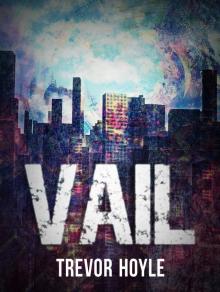 Vail
Vail Rule of Night
Rule of Night The Man Who Travelled on Motorways
The Man Who Travelled on Motorways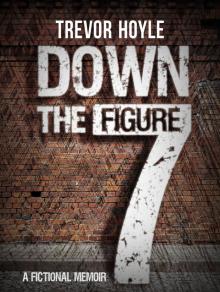 Down the Figure 7
Down the Figure 7 The Gods Look Down
The Gods Look Down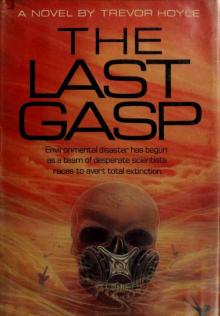 Last Gasp
Last Gasp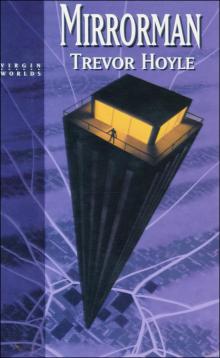 Mirrorman
Mirrorman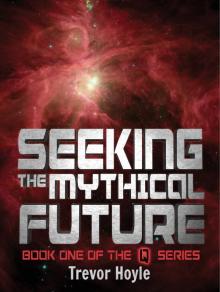 Seeking the Mythical Future
Seeking the Mythical Future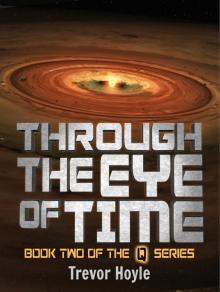 Through the Eye of Time
Through the Eye of Time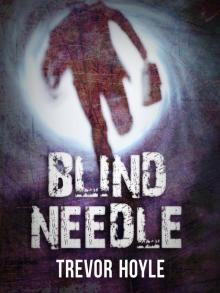 Blind Needle
Blind Needle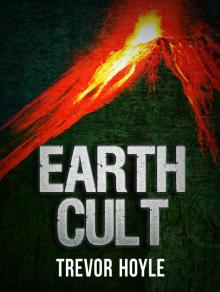 Earth Cult
Earth Cult